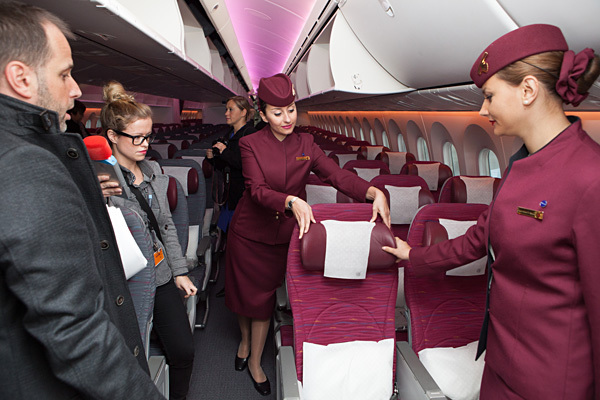May data shows signs of recovery for air travel
 Qatar Airways B787 economy class cabin
Qatar Airways B787 economy class cabin
The air transport began to see what could be the first indications of a gradual recovery in passenger traffic during May, as domestic demand and business confidence in key markets looked up for the first time, since the onset of the economic crisis triggered by the Covid-19 pandemic.
This comes after the industry hit the bottom in April when both traffic and the capacity made available by airlines reached the lowest point relative to 2019. Airlines reduced the in service fleet by half to 13,000 aircraft between January and April while load factors stagnated at just 36.6 percent. For Africa, traffic fell by 98.7 percent in April while the average passenger load factor was just 7.7percent.
However daily flights rose 30 percent between April 21, when demand fell 94.3 percent year on year- the sharpest decline in the thirty years IATA began publishing monthly traffic data- and May 27, 2020, the international airline lobby IATA, says its latest analysis. The recovery is being led by the domestic sector in Asia, the US and Europe.
Flight levels in South Korea, China and Vietnam are now just 22 to 28 percent below 2019 levels according to data from late May. Searches for air travel on Google were up 25percent at the end of May compared to the low point in April. IATA observes that the rise is coming from a very low base and still 60percent lower than the numbers sees at the start of the year.
While the uptick is not big on a global scale, IATA says it still suggests that the industry has seen the worst of the crisis, as long as there’s no relapse.
“April may represent the nadir of the crisis,” IATA Director General and chief executive Alexandre de Juniac, said June 3 observing that the number of flights was increasing and governments were beginning to lift the Covid-19 related restrictions they imposed on travel earlier during the crisis .
“Business confidence is showing improvement in key markets such as China, Germany, and the US. These are positive signs as we start to rebuild the industry from a stand-still. The optimistic part of me sees this as green shoots. The realistic part of me knows that we will likely have a long and very difficult challenge to return this industry to normal,” he added.
According to IATA, governments in 75 percent of the markets it tracks had completely banned entry by the first week of April. Another 19percent had limited travel restrictions in place, such as compulsory quarantine requirements for international arrivals.
More countries eased their lockdowns during May and some airlines have announced plans for a gradual return to service. Tanzania was the first in East Africa to open its airspace to international air travel starting June 1, and airlines such as Ethiopian, Emirates, Flydubai and Qatar have announced plans to resume services to the country between now and July.
IATA sees a gradual recovery starting in 2021 as consumer confidence returns on and passengers comes to terms with the new safety measures but reliable tests for Covid-19 will be key to this recovery.
Still, IATA sees headwinds ahead. Although governments’ stimulus packages have jumpstarted economies, individuals and businesses that have survived without travel expenses during the lockdown, may adopt new models that minimise corporate travel. Passengers will also need to be convinced that travel does not represent a greater risk than other activities and that they won’t face quarantines on arrival.
While the above challenges can be overcome by airlines offering incentives to encourage travel, the bigger challenge getting governments to resist the temptation of imposing lengthy quarantine periods as they reopen borders to international travel.
“If governments impose quarantine measures, it is equal to keeping their borders closed and industry grounded,” de Juniac says.

 African Heads of state head to South Korea next week for Summit talks
African Heads of state head to South Korea next week for Summit talks
 Trading leads as main source of income for Ugandans
Trading leads as main source of income for Ugandans
 New leadership for bankers’ umbrella as total assets top $12 billion
New leadership for bankers’ umbrella as total assets top $12 billion
 Brussels Airlines to announce Nairobi service
Brussels Airlines to announce Nairobi service
 SITA promises enhanced travel experience after Materna acquisition
SITA promises enhanced travel experience after Materna acquisition
 Saudia’s 105 aircraft order stretches A320neo lead over rival Max
Saudia’s 105 aircraft order stretches A320neo lead over rival Max
